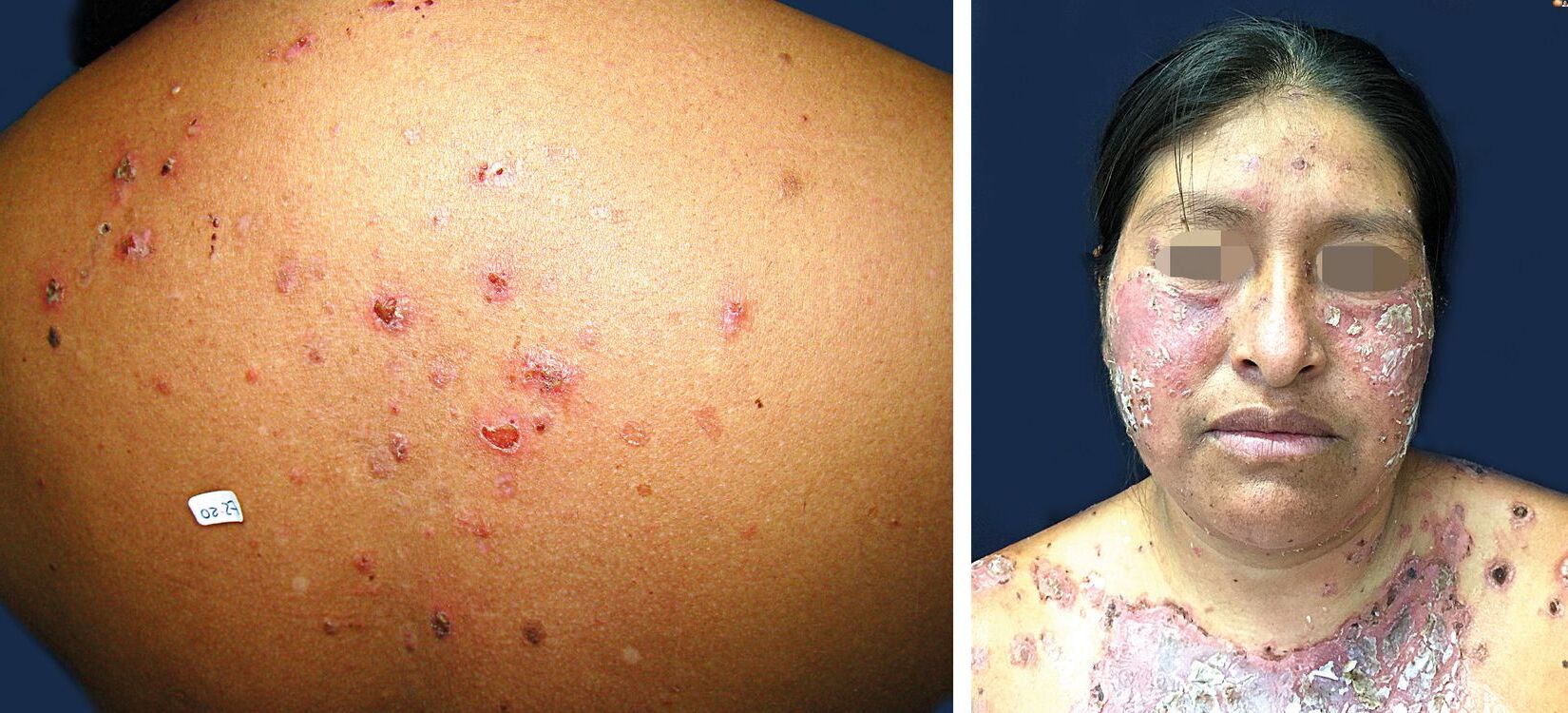
Pemphigus and Fogo Selvagem are rare autoimmune disorders that cause painful blisters on the skin and mucous membranes. These conditions occur when the immune system mistakenly attacks healthy cells, leading to blister formation. Pemphigus is more common in middle-aged and older adults, while Fogo Selvagem, a variant of pemphigus, primarily affects younger individuals in rural areas of Brazil. Both conditions can be life-threatening if not treated promptly. Symptoms often start with blisters in the mouth, making eating and drinking difficult. Over time, these blisters can spread to other parts of the body. Treatment usually involves corticosteroids and immunosuppressants to reduce inflammation and prevent further damage. Early diagnosis and management are crucial for improving quality of life and preventing complications. Understanding these conditions helps in recognizing symptoms early and seeking appropriate medical care.
Key Takeaways:
- Pemphigus and Fogo Selvagem are rare autoimmune diseases causing painful blisters. They have unique types, triggers, and treatments, impacting people worldwide and in specific regions of Brazil.
- Both conditions involve the immune system attacking skin cells, but Fogo Selvagem is endemic to certain areas in Brazil and affects younger populations, requiring increased awareness and research for better outcomes.
Understanding Pemphigus
Pemphigus is a rare group of autoimmune diseases that cause blisters on the skin and mucous membranes. It's a condition that can be both painful and challenging to manage. Let's dive into some intriguing facts about this disease.
-
Autoimmune Nature: Pemphigus occurs when the immune system mistakenly attacks healthy cells in the skin and mucous membranes, leading to blister formation.
-
Types of Pemphigus: There are several types, including Pemphigus Vulgaris, Pemphigus Foliaceus, and Paraneoplastic Pemphigus, each with unique symptoms and severity.
-
Pemphigus Vulgaris: This is the most common form, characterized by painful blisters in the mouth and on the skin.
-
Pemphigus Foliaceus: This type primarily affects the skin, causing scaly, crusty sores, often on the scalp, face, and chest.
-
Paraneoplastic Pemphigus: Associated with certain cancers, this type can cause severe blistering and is often more difficult to treat.
-
Genetic Factors: While the exact cause is unknown, genetic predisposition plays a role, with certain genes increasing susceptibility.
-
Environmental Triggers: Factors like UV radiation, certain medications, and infections can trigger or worsen symptoms.
-
Diagnosis: Diagnosis typically involves a skin biopsy and blood tests to detect antibodies attacking skin cells.
-
Treatment Options: Treatments focus on reducing symptoms and may include corticosteroids, immunosuppressants, and biologics.
-
Potential Complications: If untreated, pemphigus can lead to severe infections, dehydration, and even death.
Exploring Fogo Selvagem
Fogo Selvagem, also known as endemic pemphigus foliaceus, is a variant of pemphigus found primarily in rural areas of Brazil. It's a fascinating condition with unique characteristics.
-
Geographic Prevalence: Fogo Selvagem is most commonly found in certain regions of Brazil, particularly in rural areas.
-
Environmental Influence: The disease is believed to be influenced by environmental factors, including insect bites and exposure to certain plants.
-
Age of Onset: Unlike other forms of pemphigus, Fogo Selvagem often affects younger individuals, including children and teenagers.
-
Symptoms: Similar to pemphigus foliaceus, it causes crusty sores on the skin but rarely affects mucous membranes.
-
Cultural Impact: In affected regions, Fogo Selvagem has significant social and economic impacts, affecting the quality of life and livelihoods.
-
Research Efforts: Ongoing research aims to better understand the environmental and genetic factors contributing to Fogo Selvagem.
-
Community Support: Local communities often band together to support affected individuals, providing care and resources.
-
Public Health Initiatives: Efforts are underway to improve diagnosis and treatment access in remote areas.
-
Historical Context: The name "Fogo Selvagem" translates to "wildfire" in Portuguese, reflecting the rapid spread of skin lesions.
-
Prevention Strategies: Education and preventive measures, such as reducing exposure to potential environmental triggers, are crucial in affected areas.
Comparing Pemphigus and Fogo Selvagem
While both conditions fall under the pemphigus umbrella, they have distinct differences and similarities worth noting.
-
Common Mechanism: Both involve the immune system attacking skin cells, leading to blistering.
-
Geographic Distribution: Pemphigus is found worldwide, whereas Fogo Selvagem is endemic to specific regions in Brazil.
-
Age Range: Pemphigus can affect individuals of any age, while Fogo Selvagem often targets younger populations.
-
Treatment Approaches: Treatment strategies are similar but may vary based on the specific type and severity of the condition.
-
Research and Awareness: Increased awareness and research are essential for improving outcomes and quality of life for those affected by these conditions.
Pemphigus and Fogo Selvagem: A Glimpse into Rare Skin Conditions
Understanding Pemphigus and Fogo Selvagem helps us appreciate the complexity of rare skin conditions. These autoimmune disorders, while uncommon, have significant impacts on those affected. Pemphigus involves painful blisters and sores, often requiring long-term treatment. Fogo Selvagem, a variant, primarily affects rural areas in Brazil, linked to environmental factors like insect bites. Both conditions highlight the importance of early diagnosis and specialized care.
Research continues to uncover more about their causes and potential treatments. Raising awareness can lead to better support systems for patients. If you or someone you know shows symptoms, consulting a healthcare professional is crucial. While these conditions are challenging, advancements in medicine offer hope. By staying informed, we can contribute to a more understanding and supportive environment for those living with these rare diseases.
Frequently Asked Questions
Was this page helpful?
Our commitment to delivering trustworthy and engaging content is at the heart of what we do. Each fact on our site is contributed by real users like you, bringing a wealth of diverse insights and information. To ensure the highest standards of accuracy and reliability, our dedicated editors meticulously review each submission. This process guarantees that the facts we share are not only fascinating but also credible. Trust in our commitment to quality and authenticity as you explore and learn with us.
